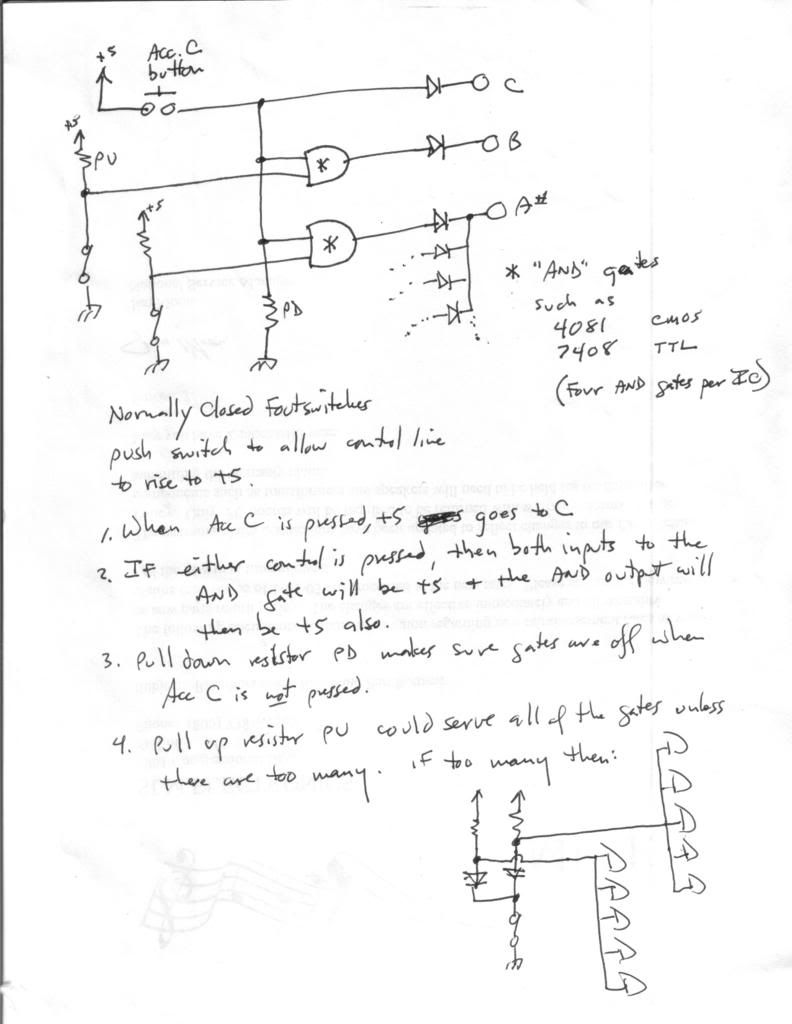
This schematic shows an example of 3 Rolands (D20) Synth switches of C, E and G. This circuit exist 12 times for the 12 different tunes of an octave.
As you see, each Roland key switch has two switches. The Roland Synth uses conductive material as switch to soften transients (like in PC-keyboards!)
Question: I need to connect these switches to a 120-button accordion accompaniment. When I press the accordion's C-major button these three tunes should sound at the same time, forming the c-major chord.
What's the simplest way of doing this?
Can I just use diodes and directly connect to Roland key switches?
Or use two transistors per Roland key switch?
Or have I to use 4066B?





Comment